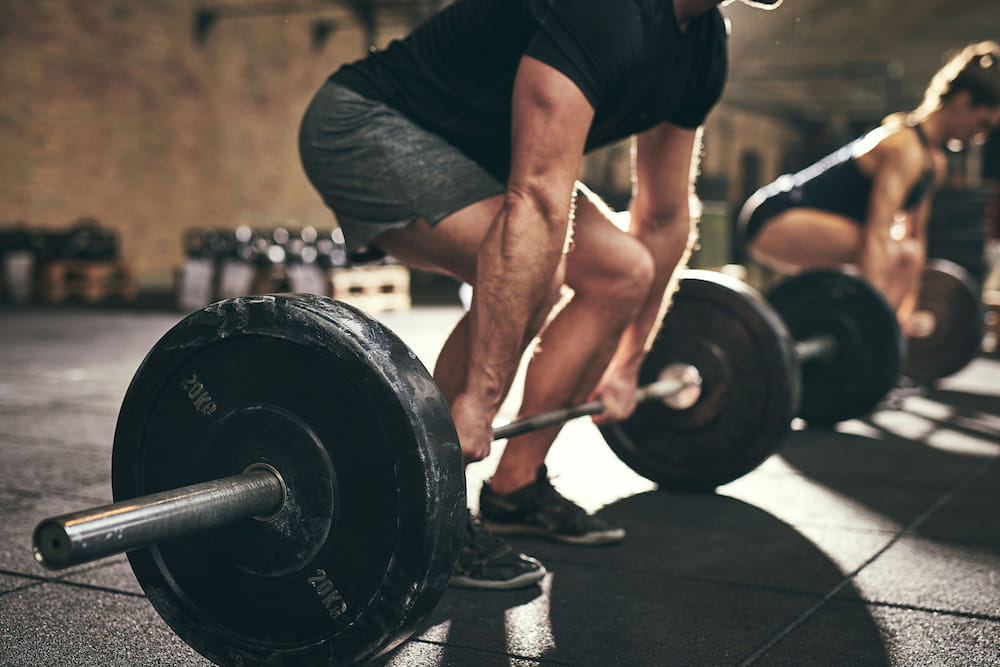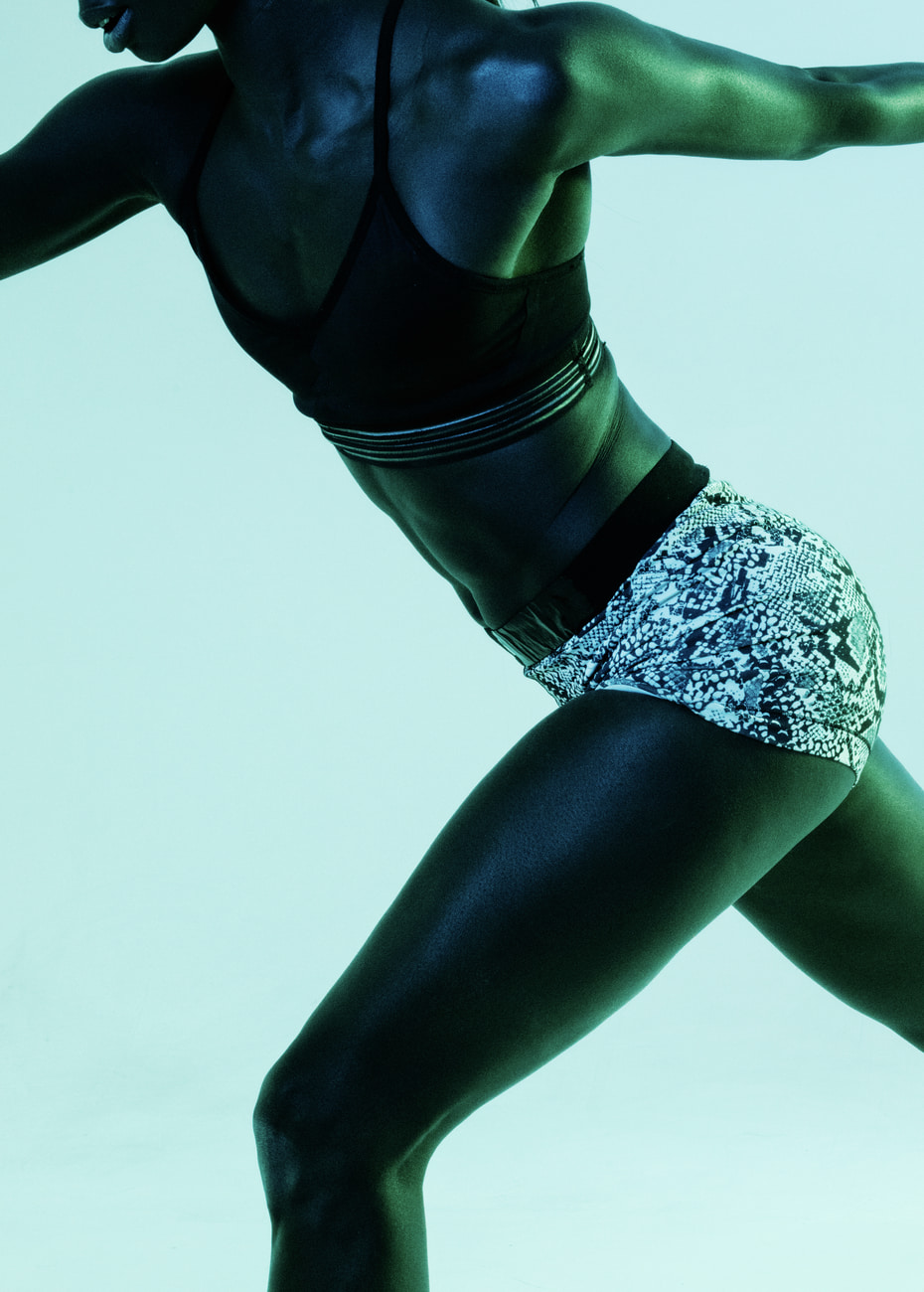In this franchise, we’re digging deeper into the activities Pacers might use to hit their streak—and offering tips from the pros to help beginner and experienced exercisers alike master them. First up was The Anatomy of a Runner. Next up: The Anatomy of a Weightlifter.
For weightlifting newbies, the gym floor can be a nerve wracking place. Dumbbells, kettlebells, or barbells—or stick to a machine? How many reps should I do, and how much weight should I use? Am I wearing the right clothing, and do I have all the equipment I need?
Here’s the deal: It’s easier than you might think to get weightlifting right. But if your aim is to build strength or mass, it helps to know not just how to move, but ways to approach your workouts mentally, how to fuel, and what equipment to buy.
Here, a lifting pro shares her top tips.
MOVE
First, Focus on Form
It’s hard not to get inspired seeing a fellow gym-goer squat with plate after plate (after plate) loaded on their barbell. But don’t be fooled—that lifter spends plenty of time (maybe even most of it) moving without any of that weight to get their form down.
“Use your bodyweight or very light weight to go through a full range of motion on movements,” says Kate Meier, a NASM-certified trainer and senior editor at Garage Gym Reviews. Even better, according to Meier? Enlist a personal trainer to help ensure your movement patterns are safe and effective—and put you on the proper track to make strides toward your goals. With the Paceline Card, a health and wellness credit card, you can also get up to 5% cash back¹ on gym-related purchases like personal training sessions.
Extend Your Time Under Tension
Slow and steady wins the race, at least when it comes to weightlifting, Meier says. “Rushing usually leads to bad reps that don’t hit the desired muscle stimulus and won’t be as effective for muscle growth.”
Plus, studies have shown that increased time under tension (or the period in which your muscles are activated, or “working,” during an exercise) can help optimize muscle growth.
THINK
Only Compete With Yourself
Comparison is the thief of joy, as the old adage goes—and that couldn’t be truer for weightlifting, says Meier. “We all start from different points and some people have more genetic advantages than others or more time to devote to working out,” she explains. “As long as you’re giving the best effort that you can, that is what matters most.” Also, Meier adds, everyone was a beginner at some point.
Understand That Strength is a Marathon, Not a Sprint
If you’re starting from square one, Meier notes that it takes roughly six to eight months of training to see considerable results. “The body does not change overnight,” she says. “Any weightlifter who is really strong or ‘jacked’ got there through consistency and hard work over a long period of time. Keep that long-term vision in mind.”
EAT
Get Fuel From Food
First things first: Meier emphasizes that she isn’t a nutritionist or a registered dietitian—and you may want to work with one of those professionals or your doctor to get more personalized advice. But, generally speaking, “in order to get stronger and build muscle, you have to eat enough,” Meier says. The exact number of calories you need per day, she notes, depends on factors like your size, sex, and activity level (again: a visit with a registered dietitian may be well worth it!).
Another baseline to keep in mind: The American College of Sports Medicine says that consuming 0.5 to 0.8 grams of protein per pound of body weight per day is ideal for the most consistent muscle growth. Don’t forget: You can get up to 5% cash back¹ on groceries with the Paceline Card!
Choose Supplements Carefully
As Meier explains, many lifters rely on supplements like whey protein and creatine to maximize their gains. But it’s important to note that supplements are currently not regulated by the Food and Drug Administration (FDA), so tread carefully.
“Do your research,” Meiers says. (For example, you can look for products with seals like USDA Organic or NSF Certified for Sport.) She also recommends talking to your doctor or a registered dietician to find the best ones for your goals.
SPEND
Pick the Right Footwear
Aside from the weights themselves, when it comes to key accessories for lifting, Meier says that proper shoes are a must. And, depending on what exercises you’re planning on doing, you may need to have a few different types on hand.
Sports like Olympic weightlifting and powerlifting have shoes with extra heel elevation to properly align a person’s body when they’re going through a movement (say, providing stability during a clean and jerk or helping to push off the ground when ascending from a squat).
Generally speaking, though, for all types of lifting, Meier likes Nike Metcons and Reebok Nanos in particular. “Go with a pair of shoes that have a flat sole and not too much cushion so that your feet feel rooted to the ground,” she advises.
Choose Accessories Tailored to the Moves You’re Doing
Like with footwear, the lifting-specific purchases you’ll want to make will depend on the type of lifts you want to do.
“A weightlifting belt may be necessary for those who need help bracing during heavy lifts,” Meier says. But she adds that it may not be necessary for every lift. She also loves wrist wraps for when she needs extra grip assistance. “Just like with my belt, however, I try not to use the wraps until I feel like I need the support,” she explains. (Another option for grip support? Chalk.) Most of these items you can pick up from a store like Dick’s or REI, both retailers that qualify for up to 5% cash back¹ with the Paceline Card.


